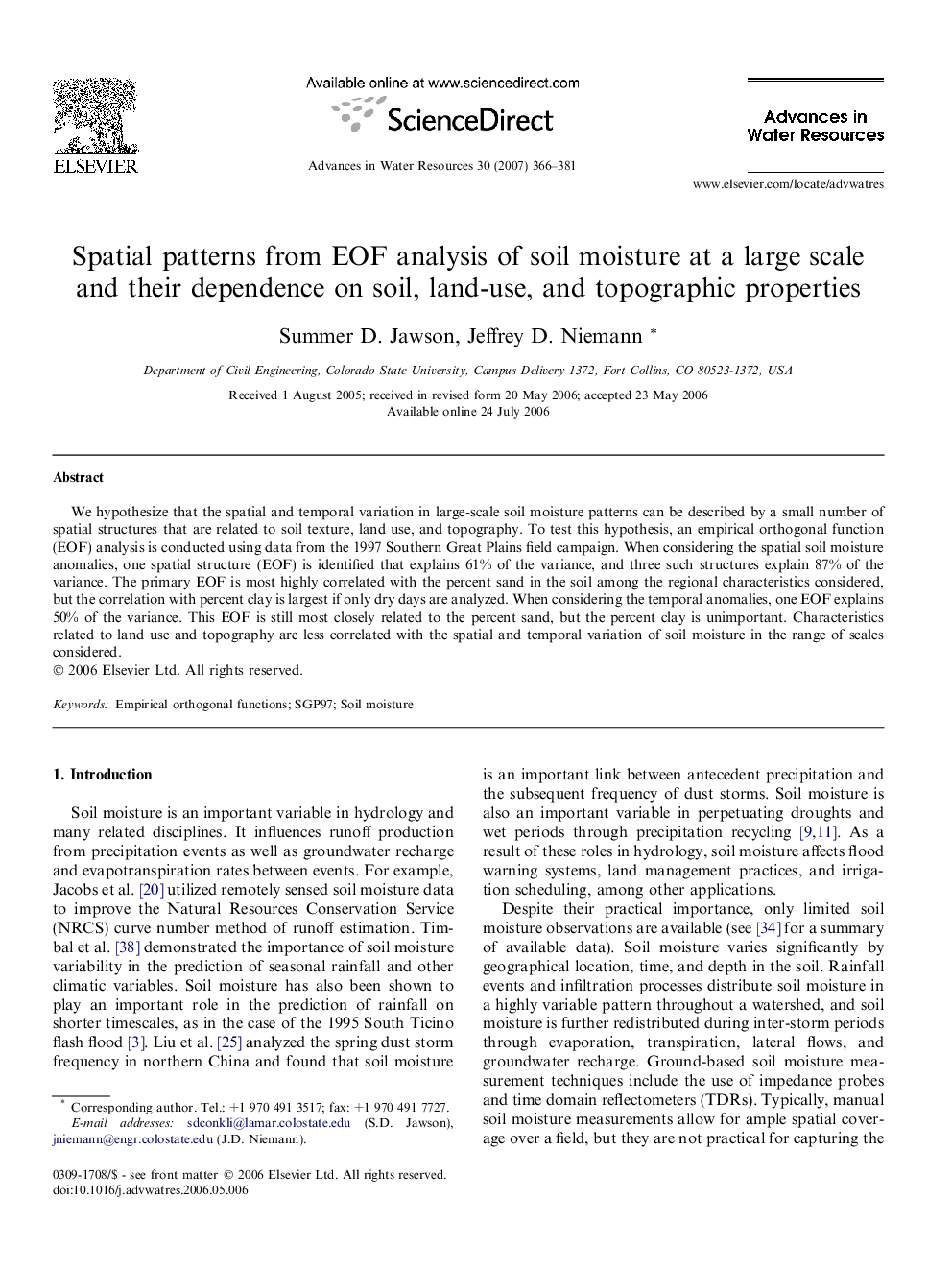| Article ID | Journal | Published Year | Pages | File Type |
|---|---|---|---|---|
| 4526836 | Advances in Water Resources | 2007 | 16 Pages |
We hypothesize that the spatial and temporal variation in large-scale soil moisture patterns can be described by a small number of spatial structures that are related to soil texture, land use, and topography. To test this hypothesis, an empirical orthogonal function (EOF) analysis is conducted using data from the 1997 Southern Great Plains field campaign. When considering the spatial soil moisture anomalies, one spatial structure (EOF) is identified that explains 61% of the variance, and three such structures explain 87% of the variance. The primary EOF is most highly correlated with the percent sand in the soil among the regional characteristics considered, but the correlation with percent clay is largest if only dry days are analyzed. When considering the temporal anomalies, one EOF explains 50% of the variance. This EOF is still most closely related to the percent sand, but the percent clay is unimportant. Characteristics related to land use and topography are less correlated with the spatial and temporal variation of soil moisture in the range of scales considered.
